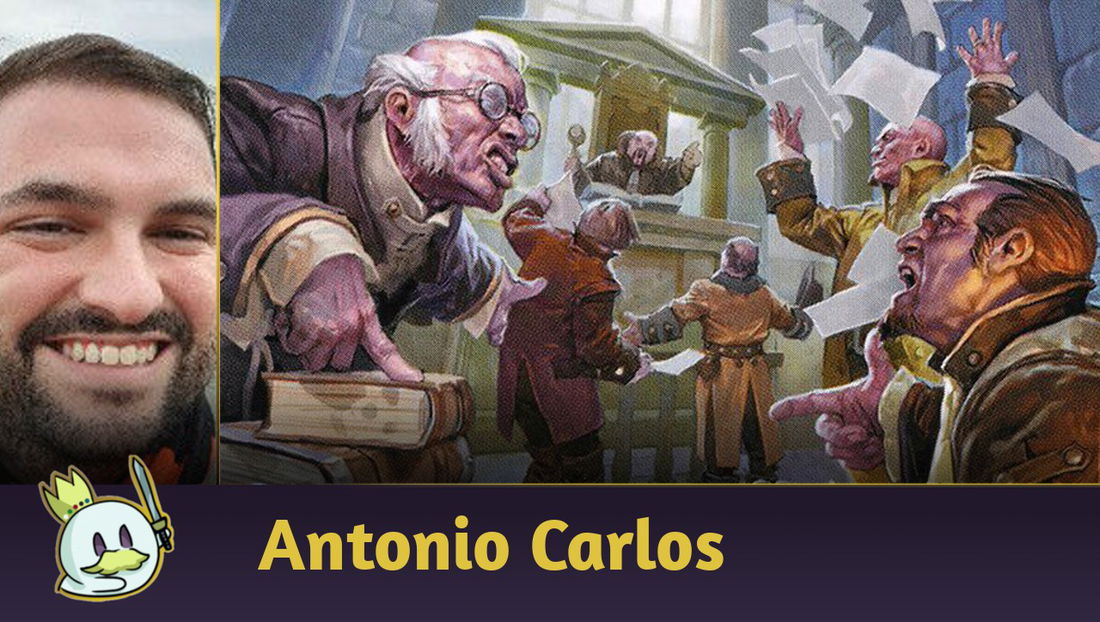Preview season for Magic's last expansion for 2024 is here - Foundations marks a new era in game philosophy as we enter 2025, with major changes including card legality between competitive formats.
One of the first previews revealed during MagicCon Vegas is a legend I met in my first year of playing MTG - one whose name I hadn't heard in quite some time: Progenitus.

Coming to Standard, Progenitus will also be legal on Pioneer, where players have some ways to cheat on mana costs and put creatures directly onto the battlefield with Transmogrify and Indomitable Creativity - but does it, whose main results in this category are with Natural Order in Legacy, have enough to compete with Atraxa, Grand Unifier?
Ad
Progenitus - Advantages and Disadvantages with Transmogrify

Progenitus is one of a long line of creatures created during the 2010s with absurd abilities and equally absurd costs. These also include the Eldrazi Titans and Blightsteel Colossus, which itself is a take on Darksteel Colossus, also reprinted in Foundations.
Its Protection from Everything ability essentially means that it can't be targeted by anything, blocked by anything, and can't take damage from anything unless an effect that prevents damage prevention is active. For practical purposes, it has the equivalent of Hexproof and can't be blocked. Progenitus, however, dies to cards like Sheoldred's Edict (if there's no other creature in play) and sweepers like Supreme Verdict and Sunfall.
So what makes it attractive for Indomitable Creativity or Transmogrify decks? The combination of built-in protection and clock - Progenitus wins the game in two turns in most games, and is much harder to remove than other threats. But the competition for this slot is quite high, so let's get to the comparisons.
Progenitus vs. Atraxa, Grand Unifier

Atraxa, Grand Unifier is the big target for Transmogrify decks in Pioneer today, as it only requires one enabler and finds a card whose ability usually wins the game or puts its controller far ahead in the game. It's the complete package: card advantage, efficient clock, life gain, and survives almost any combat.
Atraxa's biggest advantage over Progenitus is that it often offers the setup for a second Transmogrify sequence if it is destroyed: looking at the top ten cards and putting four to six of them in your hand is a lot of value.
Progenitus offers nothing in the way of card advantage, only offering one less turn to win games. In general, this turn doesn't matter much in most games because Atraxa is so good at what it does that it's hard to lose the game when it resolves - in the worst-case scenario, its controller spends two resources to gain five or more.
So, the hydra probably doesn't have the necessary slots to be worth it compared to the Phyrexian angel - at least not in the maindeck: there are games where Atraxa can be too slow, non-interactive games where this "extra turn" from Progenitus can be the crucial difference between victory and defeat, guaranteeing it a one-of slot in the Sideboard.
Progenitus vs. Worldspine Wurm & Xenagos

The combo of Xenagos, God of Revels with Worldspine Wurm and Indomitable Creativity won Pro Tour Phyrexia under Reid Duke last year, and over time it has been overshadowed - first by the combo of Sorin, Imperious Bloodlord with Vein Ripper and now with Transmogrify and Atraxa, Grand Unifier, but it's still a solid deck that can make occasional results.
Ad
In direct comparison, Progenitus has the advantage of requiring only one card: a token from Fable of the Mirror-Breaker or a Dwarven Mine is enough to set a two-turn clock on the opponent and demand an immediate response. The setup is smaller and consequently has less chance of failure since, with the combo, it is possible to risk a Creativity for one and hit a Xenagos.
On the other hand, Worldspine Wurm and Xenagos, God of Revels is an immediate combo-kill: Worldspine Wurm will be attacking as a 30/30 Trample and, if removed, will leave three tokens in play. Xenagos, on the other hand, is a dead card without the wurm and the worst possible draw, but it is not as if a draw on Progenitus would be any different.
The comparison between the two takes the opposite side of what would be the case for Atraxa, Grand Unifier. Progenitus offers more security for Indomitable Creativity to operate with fewer pieces while promoting less interactive combo-kills, making it harder to disrupt. However, the lack of immediate lethal makes a difference in non-interactive games and/or for the “false Tempo” that the deck offers, although it does not prevent Xenagos and Worldspine Wurm from being present in the Sideboard or in the Maindeck with Progenitus in reserve in the Sideboard.
After all, is it worth using Progenitus with Transmogrify or Indomitable Creativity?

At first glance, it seems that Progenitus is somewhere in between what Worldspine Wurm and Xenagos, God of Revels offer and the advantages of only needing one slot that Atraxa, Grand Unifier has, but without guaranteeing any of the obvious benefits that the other options have: it doesn't immediately win the game, and it doesn't offer enough card advantage to keep its controller in the game if the combo doesn't work.
Its presence will probably be on the Sideboard. There are games where this “extra turn” that Progenitus offers instead of Atraxa makes a difference because it is a less interactive game, or where its Protection from Everything guarantees more security against the opponent’s removals and potential blockers.
In the case of Worldspine Wurm, Progenitus guarantees a safer plan against games that are very dependent on removals that guarantee never having two targets for Indomitable Creativity while forcing the opponent to choose answers that are more efficient against it to the detriment of answers that are better against Worldspine Wurm, creating a new puzzle in games 2 and 3 of a game against this archetype.
Conclusion
That’s all for today!
If you have any questions, feel free to leave a comment!
Thanks for reading!








— Comentarios0
Se el primero en comentar